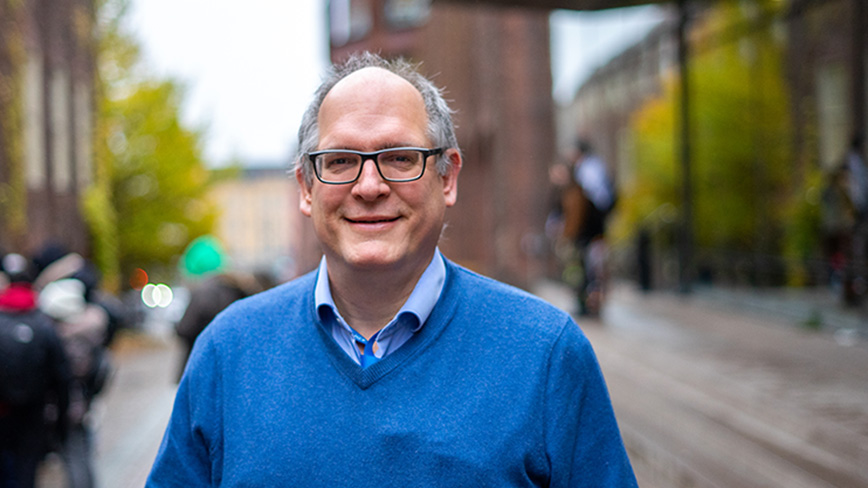New professor improves biomaterials by looking at the nanolevel

Stephan Volker Roth is a new professor for scattering-based characterisation in fibre and polymer technology at KTH. He shares his position between the Division of Fibre Processes at KTH and DESY in Hamburg.
“The sustainability aspect is very important for me. To go towards sustainable materials we must understand what is happening on the nanoscale to make them better.”
Stephan Volker Roth is no newcomer to KTH, having been an adjunct professor here for six years. The new position means that he will build up a research team in Stockholm and divide his time between KTH and Hamburg, where he leads the Sustainable Materials research group at the German electron synchrotron DESY.
“It is a strategic collaboration between DESY and KTH, which I would say combines the strengths of both institutions.”
Sustainability research
Stephan Volker Roth describes his research as simply being “sustainability”. His goal is to develop new and better sustainable bio-based polymeric materials, functionalize them and apply them in functional devises, partially replacing synthetic materials. He believes that the collaboration between KTH and DEZY will make this possible.
“Being at CBH and the Department of Fibre and Polymer technology allows me to connect to the advanced methods we have here and to apply the novel materials that are being developed. At DESY, we are able to look into the nanoscale structure (of these materials) and understand why it leads to this functionality. This is very unique.”
Stephan Volkher Roth gives courses at KTH where he shows the students what they can do at large-scale facilities like MAX IV 4, how to perform the experiments and how to analyse the data, but he also try to teach them who write proposals and apply for time at the beamlines at these large scale facilities.
New solar cells
One project where this method is being applied is a collaboration between KTH, DESY and the company Celluxtreme. They are developing sprayable solar cells based on new cellulose materials. Another example is one of his postdocs who are trying to replace part of the fossil-based polymers in thermoelectrics with lignin.
“I want to contribute to make society sustainable. Sustainability are the material, the methods, the processes and even machine learning is part of sustainability because it can make processes more efficient. There is a lot of research to be done and there is a long way still ahead of us. But many small steps make a big one,” says Stephan Volker Roth.
Text: Jon Lindhe

